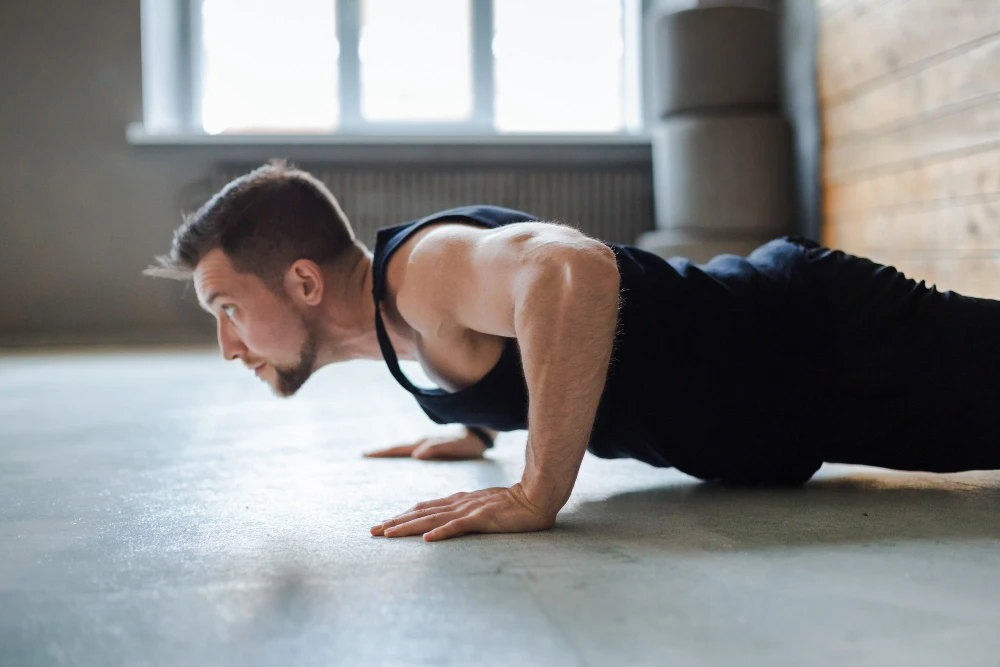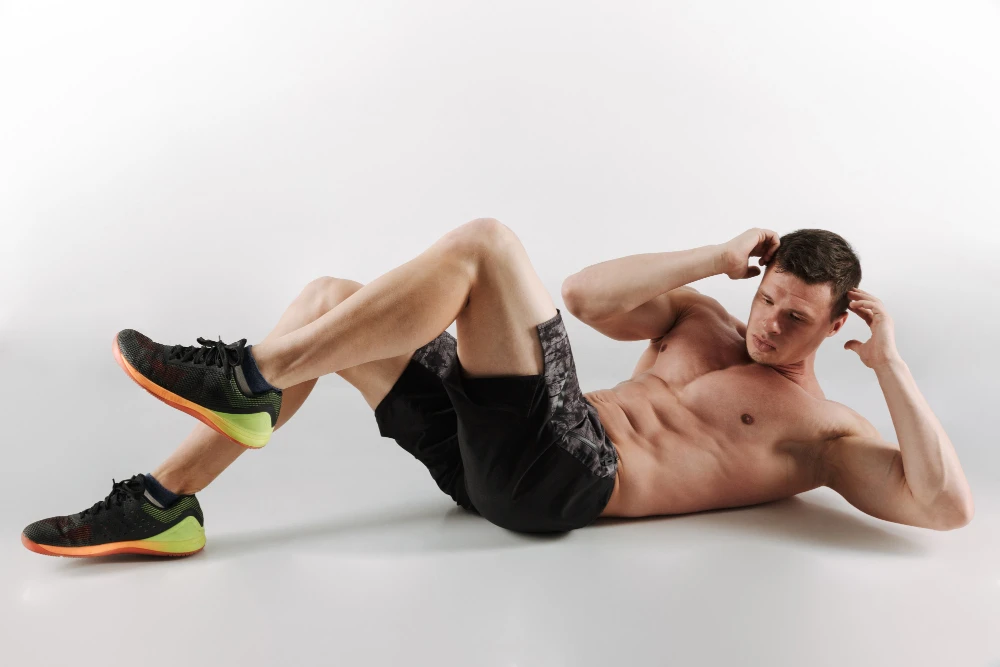Are you tired of spending countless hours at the gym without seeing the results you desire? If so, you may want to consider incorporating compound exercises into your Muscle Gain Workout. Compound exercises are a highly effective way to work multiple muscle groups at once, allowing you to maximize your time in the gym and achieve the results you want. However, proper execution of these exercises is crucial for success.
Without the proper form and technique, you may not only be wasting your time but also putting yourself at risk for injury. In this article, we will explore the benefits of compound exercises, provide tips on how to properly execute them, and offer advice on how to incorporate them into your workout routine for maximum results.
So, whether you’re a seasoned gym-goer or just starting out, read on to learn how to take your fitness to the next level with compound exercises.
What are compound exercises?
Compound exercises are exercises that work multiple muscle groups at once. Unlike isolation exercises, which focus on one muscle group at a time, compound exercises require the use of multiple joints and muscle groups to perform the movement. Some examples of compound exercises include squats, deadlifts, bench press, pull-ups, and lunges.
Benefits of compound exercises
Compound exercises offer numerous benefits for strength training and overall fitness. Here are some of the key advantages:
- Efficient use of time: Compound exercises engage multiple muscle groups and joints simultaneously, allowing you to work on multiple areas of your body in a single movement. This saves time compared to isolation exercises that target only one muscle group at a time.
- Increased muscle mass and strength: Compound exercises recruit large muscle groups, leading to greater muscle activation and stimulation. This promotes muscle growth and helps you develop overall strength. Examples of compound exercises include squats, deadlifts, bench presses, and pull-ups.
- Improved functional strength: Compound exercises mimic real-life movements, making them more practical and applicable to everyday activities. By training multiple muscles and joints together, you develop strength and coordination that can translate into improved performance in sports, activities, and daily tasks.
- Enhanced calorie burn: Due to their high level of muscle involvement, compound exercises can increase your heart rate and metabolic rate, resulting in greater calorie expenditure during and after your workout. This can be beneficial for weight loss or weight management goals.
- Increased hormone release: Compound exercises stimulate the release of growth hormone, testosterone, and other anabolic hormones, which play a crucial role in muscle growth and recovery. These hormonal responses can further enhance your gains and improve overall body composition.
- Core engagement and stability: Many compound exercises require the engagement of your core muscles to maintain stability and proper form. This helps strengthen your core, including your abdominal, back, and hip muscles, leading to improved posture and reduced risk of injuries.
- Versatility and variety: Compound exercises offer a wide range of variations and progressions, allowing you to continually challenge your body and avoid plateaus. With different grips, stances, and equipment variations, you can modify the exercises to suit your fitness level and target specific muscle groups.
It’s important to note that while compound exercises offer numerous benefits, a well-rounded fitness routine should also include isolation exercises to target specific muscles and address any muscle imbalances or weaknesses. Consulting with a qualified fitness professional can help you design a program that suits your individual goals and needs.

The science behind compound exercises
Compound exercises are movements that work multiple muscle groups at the same time. They are often considered to be more effective than isolation exercises, which only work one muscle group at a time.
There are a number of reasons why compound exercises are so effective. First, they allow you to lift heavier weights than you could with isolation exercises. This is because you are using more muscle mass to perform the movement. When you lift heavier weights, you are able to stimulate more muscle growth and strength gains.
Second, compound exercises help to improve your coordination and balance. This is because they require you to use multiple muscle groups in a coordinated fashion. As you get stronger and more coordinated, you will be able to perform these exercises with more ease and efficiency.
Third, compound exercises help to burn more calories than isolation exercises. This is because they require more energy to perform. When you burn more calories, you are more likely to lose weight or body fat.
Finally, compound exercises help to improve your overall fitness level. They help to improve your strength, muscle mass, coordination, balance, and cardiovascular health.
Some examples of compound exercises include:
- Squats
- Deadlifts
- Bench presses
- Pull-ups
- Push-ups
- Lunges
- Crunches
- Planks
These are just a few examples of compound exercises. There are many other exercises that can be classified as compound exercises.
If you are looking to improve your strength, muscle mass, coordination, balance, cardiovascular health, and overall fitness level, then you should include compound exercises in your workout routine.
Here are some tips for incorporating compound exercises into your workout routine:
- Start with a few compound exercises and gradually add more as you get stronger.
- Focus on compound exercises that work all of the major muscle groups.
- Lift heavy weights and perform 8-12 repetitions of each exercise.
- Rest for 1-2 minutes between sets.
- Train 3-4 times per week.
By following these tips, you can get the most out of your compound exercises and achieve your fitness goals.

Common mistakes to avoid when doing compound exercises
Compound exercises are great for building strength and muscle mass, but they can also be dangerous if not done correctly. Here are some common mistakes to avoid when doing compound exercises:
- Not warming up properly. Before you start lifting weights, it’s important to warm up your muscles. This will help to prevent injuries. A good warm-up includes light cardio and dynamic stretches.
- Using too much weight. It’s better to start with a light weight and gradually increase the weight as you get stronger. Using too much weight can lead to injuries.
- Not using proper form. Proper form is essential for avoiding injuries. If you’re not sure how to do an exercise correctly, ask a personal trainer for help.
- Lifting too quickly. It’s important to control the weight throughout the entire range of motion. Lifting too quickly can put stress on your joints and muscles.
- Not taking rest days. Your muscles need time to recover after a workout. If you don’t take rest days, you’re more likely to get injured.
Here are some additional tips for avoiding common mistakes when doing compound exercises:
- Get a coach or personal trainer. If you’re new to weightlifting, it’s a good idea to get help from a qualified professional. They can teach you proper form and help you avoid injuries.
- Listen to your body. If you’re feeling pain, stop the exercise immediately. Don’t push yourself too hard.
- Be patient. It takes time to build strength and muscle mass. Don’t get discouraged if you don’t see results immediately. Just keep working hard and you will eventually reach your goals.
Compound exercises are a great way to improve your overall fitness. By avoiding common mistakes and following these tips, you can safely and effectively build strength and muscle mass.
Proper form and technique for compound exercises
To perform compound exercises properly, it’s important to focus on maintaining proper form throughout the movement. This means keeping your core tight, maintaining a neutral spine, and using a slow and controlled motion to perform the exercise. Additionally, it’s important to avoid using momentum to perform the exercise, as this can take the focus off the targeted muscle groups and increase your risk of injury.
Compound exercises for upper body strength
If you’re looking to build upper body strength, compound exercises can be a highly effective way to achieve your goals. Some examples of compound exercises for upper body strength include the bench press, pull-ups, and push-ups. To perform the bench press, lie on a bench with your feet flat on the ground and your hands gripping the barbell slightly wider than shoulder-width apart. Slowly lower the bar to your chest, pause briefly, then press the bar back up to the starting position.
Compound exercises for lower body strength
Compound exercises are also highly effective for building lower body strength. Some examples of compound exercises for lower body strength include squats, deadlifts, and lunges. To perform a squat, stand with your feet shoulder-width apart and your toes pointed slightly outward. Slowly lower your body down as if you were sitting into a chair, keeping your knees in line with your toes. Once your thighs are parallel to the ground, press back up to the starting position.
Compound exercises for full body workouts
If you’re looking for a full-body workout, compound exercises are the way to go. They allow you to work multiple muscle groups at once, helping you build strength and endurance more quickly than if you were to perform isolation exercises alone. Some examples of compound exercises for full-body workouts include the squat press, deadlifts, and burpees.
Incorporating compound exercises into your fitness routine
If you’re looking to incorporate compound exercises into your fitness routine, it’s important to start slowly and gradually increase the intensity of your workouts over time. Begin with a light weight and focus on maintaining proper form throughout the movement. As you get stronger, gradually increase the weight and number of repetitions you perform. Additionally, it’s important to give your muscles time to rest and recover between workouts, so be sure to alternate your compound exercises with rest days or other types of exercise.

Let’s Sum Up
Compound exercises are a highly effective way to build strength and endurance, maximize your time in the gym, and achieve the results you want. By focusing on proper form and technique and gradually increasing the intensity of your workouts over time, you can incorporate compound exercises into your fitness routine and take your fitness to the next level.
So whether you’re a seasoned gym-goer or just starting out, be sure to give compound exercises a try and see the results for yourself!



